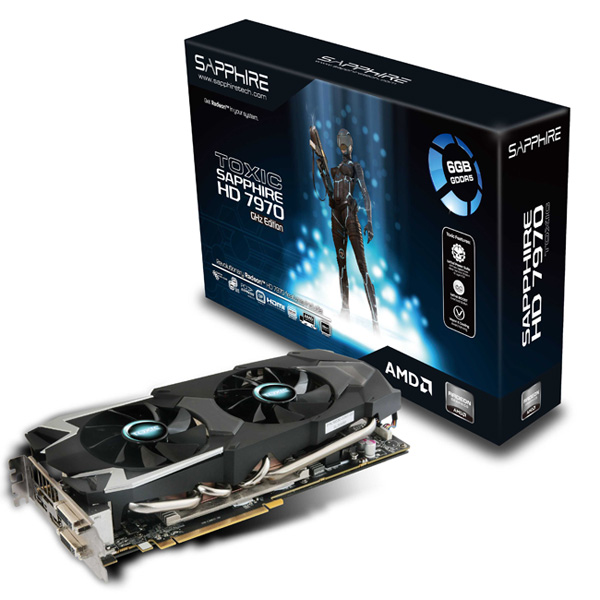Is a 6GB framebuffer just overkill?
Our original look at the Sapphire Radeon HD 7970 TOXIC 6GB video card determined that, on balance, it is the fastest single-GPU card we've tested. Equipped with the highest frequencies yet seen on a Radeon HD 7970, made possible by the 'Lethal Boost' button and GHz Edition GPU heritage, Sapphire also takes the opportunity of laying down 6GB of GDDR5 memory on the beast.
Huge rendering power and a silly-sized memory framebuffer sound like a perfect fit for users looking to game on three full-HD screens under AMD's Eyefinity multi-monitor technology. Sapphire sensibly includes the requisite adapter - active miniDP-to-DVI - for easy-as-pie connectivity, too. Armed with six games, three screens, and top-end image-quality settings, the TOXIC remains the best of our high-end trio, though even it doesn't have the pixel chutzpah to run the latest titles at silky-smooth framerates.
Examination of the per-second and per-frame times indicates that the TOXIC's performance lead over a Radeon HD 7970 GHz Edition is more down to elevated clocks than jumbo framebuffer considerations, and we feel that gaming situations would need to be artificially manufactured to show the real-world worth of an extra 3GB of card memory; heck, the GeForce GTX 680 does well enough with 'only' 2GB.
Sapphire's decision to use 6GB of video memory for the TOXIC is more of a marketing initiative than real-world benefit. But the TOXIC isn't about being sensible and conservative, because it's designed as the ultimate expression of Radeon HD 7970 GPU's goodness. As good as this monster card is, we'd recommend Sapphire look to release a complementing version with a 3GB framebuffer and 'Flex' output connectors, thereby dropping the price by a good £100, to a more-palatable £400.














